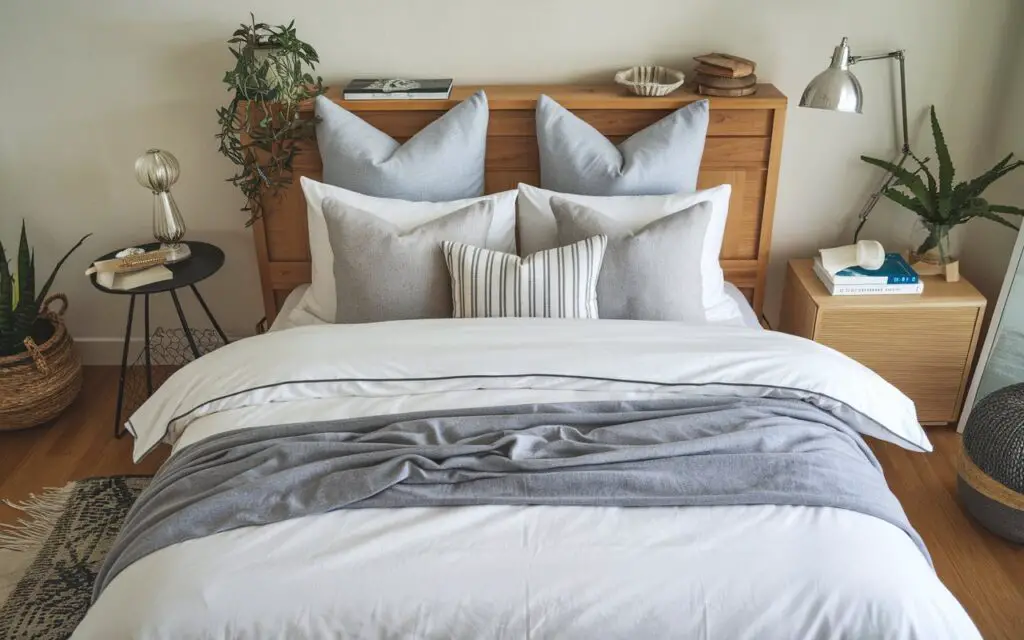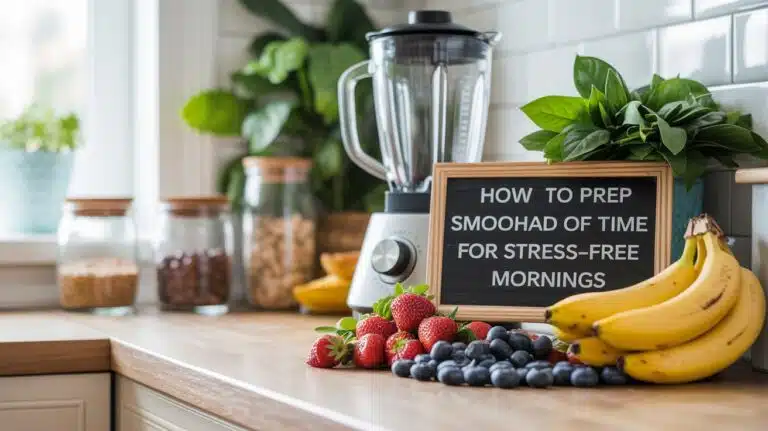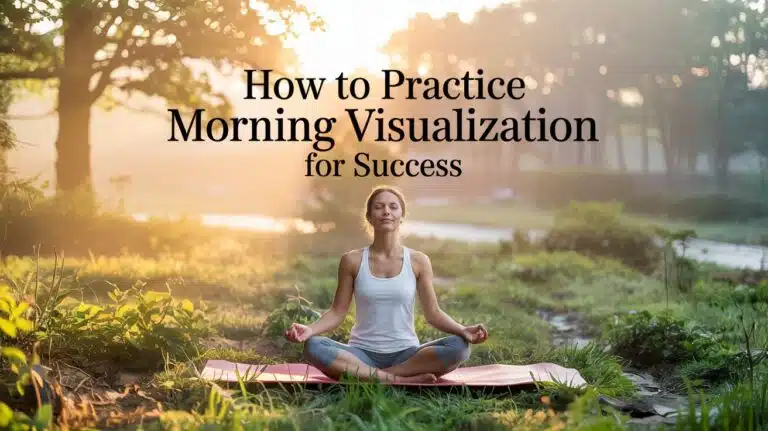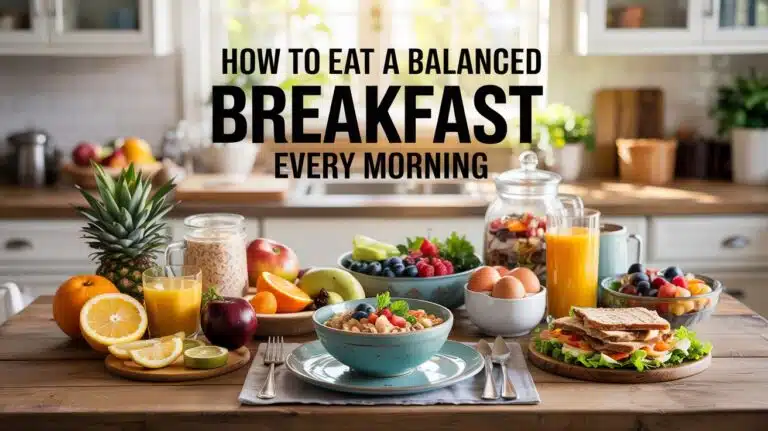Minimalist living isn’t just about having fewer things—it’s about creating space for what truly matters.
When I first heard about minimalism, it seemed overwhelming. I imagined stark white walls, a single chair, and a wardrobe that wouldn’t last a week.
But as I began to explore the concept, I realized that minimalist living is far more flexible and forgiving than I thought. It’s about designing a life that works for you, free from unnecessary clutter.
If you’ve ever thought about simplifying your life but felt too daunted to start, this guide is for you. Together, we’ll explore why minimalist living is not just doable but also deeply rewarding.
Key Takeaways
- Minimalist living isn’t about deprivation; it’s about intentionality.
- You don’t need to overhaul your life overnight—small steps make a big difference.
- Minimalism creates room for clarity, focus, and joy.
- Anyone can adapt minimalism to suit their needs and lifestyle.
Why We Think Minimalism Is Hard
Many people believe minimalism is difficult because it seems like a drastic lifestyle change. The thought of parting with possessions or shifting habits can feel overwhelming, especially in a culture that equates success with abundance.
Common Misconceptions
- You have to throw everything away: Minimalism isn’t about deprivation. It’s about keeping what serves you.
- It’s only for the wealthy: Minimalism is for everyone. In fact, it can save you money.
- It’s too restrictive: Minimalism is adaptable. You decide what works for you.
Reframing the Perspective
Instead of viewing minimalism as a sacrifice, think of it as an opportunity to focus on what truly matters. For me, it wasn’t about losing things but gaining clarity and peace.

The Myth of “All or Nothing”
One of the biggest misconceptions about minimalism is that you need to throw everything out. In reality, minimalism is about alignment. It’s aligning your possessions, time, and energy with what brings you joy and purpose.
When I started, I didn’t toss all my belongings into donation bags. Instead, I focused on what I used and loved. Take your wardrobe as an example.
Rather than thinking, “I need to cut down to 30 items,” ask yourself, “Which clothes make me feel good?” This shift makes the process less intimidating.
A Real-Life Example
I once had a kitchen drawer stuffed with gadgets—melon ballers, egg separators, you name it. One day, I asked myself, “When was the last time I used half of these?”
I kept the essentials and donated the rest. The result? I saved time hunting for tools and found more joy in cooking.
Tip: Start small. Tackle a single drawer or shelf. Progress, not perfection, is the goal.
Why It Works
Minimalism isn’t about perfection. It’s about progress. You’re creating a life that feels lighter, not one dictated by someone else’s rules. As author Joshua Becker says,
“Minimalism is the intentional promotion of the things we most value and the removal of anything that distracts us from it.”
Clearing Mental Clutter
Minimalism isn’t just about physical spaces. It also involves decluttering your mind. Mental clutter—worry, overthinking, and an endless to-do list—can weigh us down as much as physical items.
The Impact of Mental Clutter
| Symptoms of Mental Clutter | Benefits of Mental Clarity |
| Difficulty focusing on tasks | Improved concentration |
| Feeling overwhelmed and stressed | A calmer, more balanced mindset |
| Procrastination and indecision | Increased productivity and confidence |
How to Clear Mental Clutter
- Prioritize: Identify what truly matters and focus your energy there.
- Practice mindfulness: Meditation or journaling can help you stay present.
- Set boundaries: Say no to commitments that don’t align with your goals.
Pro Tip: Write down your thoughts to organize and offload mental clutter.
The Emotional Benefits of Minimalism
Minimalism isn’t just about decluttering your home; it’s about decluttering your mind. When I began simplifying, I felt an emotional shift I didn’t expect. Suddenly, my space felt calmer, and my stress levels dropped.
Less Stuff, More Clarity
Think about how much mental energy clutter consumes. Every time you see that pile of papers on your desk or those unworn shoes in your closet, it’s like a tiny alarm going off. By letting go, you’re quieting those alarms.
Here’s a quick comparison of how clutter impacts your mental state:
| Cluttered Environment | Decluttered Environment |
| Overwhelming and distracting | Calming and focused |
| Hard to find what you need | Everything has its place |
| Increases stress and frustration | Promotes peace and happiness |
A Personal Story
I used to hoard sentimental items—ticket stubs, birthday cards, you name it. Letting go felt like losing memories. But when I sorted through them, I realized most didn’t carry as much meaning as I thought.
Keeping just a few special pieces gave me the same emotional connection without the clutter.
Tip: If you struggle to let go, take a picture of sentimental items. You’ll still have the memory without the physical burden.

How Minimalism Saves Time and Money
One surprising benefit of minimalism is how much it streamlines your life. Imagine not spending hours cleaning, organizing, or searching for misplaced items. Or think about the money saved by avoiding impulse purchases.
Time Saved
When everything you own has a purpose and a place, life becomes easier. For example:
- Morning routines: A simplified wardrobe means no more agonizing over what to wear.
- Household chores: Less stuff equals less to clean and maintain.
Money Saved
Minimalism also curbs the urge to buy things you don’t need. Here are three ways it impacts your finances:
- Mindful shopping: You’ll only buy what truly adds value to your life.
- Avoiding duplicates: Knowing what you have prevents unnecessary purchases.
- Long-term investments: Instead of buying cheap, trendy items, you’ll focus on quality and longevity.
Fun Fact: Studies show that experiences bring more happiness than possessions. Minimalism helps you shift spending from things to experiences, enriching your life.
Steps to Start Living Minimally
If you’re ready to dive into minimalism, here’s a step-by-step guide to help you get started:
1. Start Small
Choose one area to declutter, like your nightstand or a kitchen drawer. Success in small spaces builds momentum.
2. Adopt the “One In, One Out” Rule
For every new item you bring into your home, remove one. This keeps your space balanced.
3. Use the “Joy Test”
Marie Kondo popularized the idea of asking if an item “sparks joy.” While it sounds simple, it’s incredibly effective.
4. Set Boundaries
Decide how much space you want to dedicate to certain items. For example, limit your books to one shelf or your shoes to one rack.
Pro Tip: Use a timer. Spend 15 minutes decluttering each day. It’s manageable and keeps you consistent.
Overcoming Common Struggles with Minimalism
“I Don’t Know Where to Start”
Feeling stuck? Begin with the low-hanging fruit—items you don’t use or love. It’s easier to build momentum when you see immediate results.
“But What If I Need It Later?”
This fear is common. To combat it, box up the items you’re unsure about and store them for a set period (e.g., six months). If you don’t use them, let them go.
“I Don’t Have Time”
Minimalism saves time in the long run. Remember, you don’t need to declutter everything at once. Focus on one small area at a time.
The Power of a Minimalist Mindset
Adopting a minimalist mindset is transformative. It shifts your focus from “more” to “enough,” freeing you to appreciate what you have.
Key Principles of the Minimalist Mindset
- Gratitude: Appreciate what you have rather than chasing more.
- Intentionality: Make deliberate choices about how you spend time and money.
- Contentment: Embrace the idea that you already have enough.
How It Changed My Life
Before minimalism, I was always chasing the next thing—a new gadget, a bigger wardrobe. Now, I’m more content and less stressed, knowing I have everything I truly need.
Tip: Reflect on your priorities and let them guide your decisions.
How to Make Minimalism Work for You
Minimalism isn’t one-size-fits-all. It’s about creating a version that fits your life and values.
Customize Your Approach
- Focus on what matters most: Identify areas of your life where simplicity would bring the greatest benefits.
- Set realistic goals: Start small and build gradually.
- Be flexible: Your version of minimalism can evolve over time.
Pro Tip: Regularly reassess your belongings and commitments to ensure they align with your current priorities.

FAQ: Minimalist Living
Can I practice minimalism with kids?
Absolutely! Teach kids the value of quality over quantity. Involve them in the decluttering process by turning it into a game.
Can families practice minimalism?
Absolutely. Minimalism works for families too. Involve everyone in the process and focus on shared goals, like more family time or saving for experiences.
Does minimalism mean no decorations?
Not at all. It’s about intentionality. Decorate with pieces that have meaning and bring joy.
Can minimalism help with mental health?
Yes! A simplified environment reduces stress, improves focus, and promotes a sense of calm.
Is minimalism expensive?
Not at all. Minimalism often saves money because you buy less and focus on quality over quantity.
How do I handle sentimental items?
Keep a few meaningful items and let go of the rest. Take photos to preserve memories.
Can I be a minimalist and still enjoy hobbies?
Yes! Minimalism encourages you to focus on hobbies that truly bring you joy. Prioritize quality tools and materials.

Final Thoughts
Minimalist living isn’t about sacrifice; it’s about freedom. It’s about freeing yourself from the overwhelm of too much stuff and too many commitments.
By focusing on what truly matters, you create a life that feels lighter, brighter, and more meaningful.
So, why not take that first step today? Start small, be patient, and enjoy the journey. You might just find that minimalism is easier—and more rewarding—than you ever imagined.




